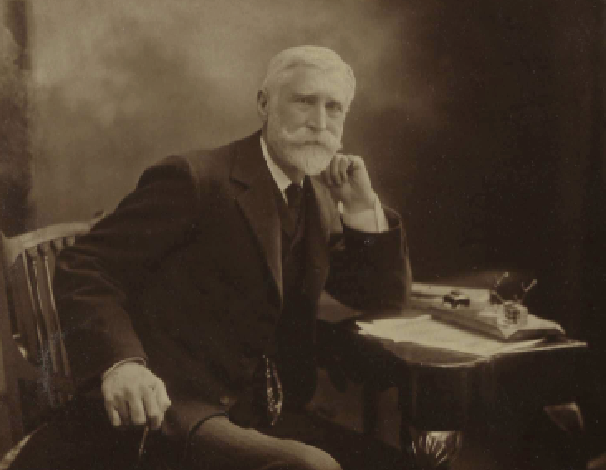Early life
Published in 18th-19th Century Social Perspectives, 18th–19th - Century History, 1913, 20th Century Social Perspectives, 20th-century / Contemporary History, Features, Issue 4 (July-August 2013), Volume 21
On 7 October 1913, AE (George Russell) warned the employers in an open letter in the Irish Times: ‘You may succeed in your policy’ but ‘the men . . . will loathe you . . . the children will be taught to curse you’. The prediction, writes Thomas J. Morrissey, was fulfilled in the case of William Martin Murphy, who was branded by Jim Larkin in the Irish Worker as ‘a capitalist sweater’, ‘a soulless, money-grubbing tyrant’.
William Martin Murphy was born near Castletownbere, Co. Cork, on 6 January 1845, the only child of Denis Murphy, building contractor, and his wife, Mary Anne Martin. The next year the family and business moved to Bantry. When William was four years of age his mother died. He retained, nevertheless, happy memories of Bantry. He returned there each year throughout his life, remaining ‘Willie Murphy’ to the local people despite his business success. After attending the local primary school, he was sent, aged thirteen, to Belvedere College, Dublin. Already he showed a self-reliant disposition that refused to be bullied or intimidated by adults or his own peers. He would later view Larkin as a bully, a dictator seeking to control the entire commercial business of Dublin by means of obloquy and the sympathetic strike. When Murphy was eighteen, his father died. He returned home to run the business. Before long he moved his headquarters to Cork City. He branched into light rail construction and made a mark in Cork society. He was a well-dressed young man, widely read and with a social conscience. He married Mary Julia Lombard, a daughter of one of Cork’s oldest business families, by whom he had five sons and three daughters.
















